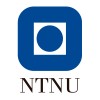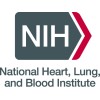
ORSIRO Stents Versus Xience PRIME Stents Assessed by Optical Coherence Tomography
Coronary Heart DiseaseThis prospective, randomized trial will compare the extent of covered stent strut segments by assessed by Optical Coherence Tomography (OCT) of the ORSIRO DES with that of the XIENCE PRIME DES, which is the standard of choice of contemporary drug eluting stents (DES).

Comparison of Cypher Select and Taxus Express Coronary Stents
Coronary Artery DiseaseAngina PectorisRandomized nine months clinical comparison of implantation of Taxol eluting (Taxus Express) and Sirolimus eluting (Cypher Select) stents in non-selected patients with coronary artery disease.

Training at Different Intensities in Coronary Artery Disease -Effects on Myocardial Function
Coronary Artery DiseaseThe study investigated if aerobic endurance exercise of different intensity has different impact on the physical capacity and myocardial function in patients with coronary artery disease. Patients with stable CAD trained for 10 weeks, and oxygen consumption and myocardial function were measured before and after this period. Patients were randomly assigned to each exercise group.

DARE: Diabetes in cArdiac REhabilitation
Type 2 Diabetes MellitusCoronary Artery DiseaseThe aim of the DARE study is to see whether strict glycemic control during cardiac rehabilitation may ameliorate the improvement of exercise capacities (VO2 peak, peak workload, ventilatory threshold)in patients with type 2 diabetes with coronary artery disease.

Comparison of Echocardiographic Techniques in Diagnosis of Coronary Artery Disease
Coronary DiseaseThis study is designed to compare two different echocardiographic techniques in the evaluation of heart disease (coronary artery disease). Both tests called Myocardial Contrast Echocardiography with Pharmacologic Stress and Stress Echocardiography with Dobutamine, are performed using a standard echocardiographic machine. Myocardial Contrast Echocardiography (MCE) does not use radioactivity. It uses sound waves like standard echocardiography. However, with MCE patients receive an injection of a "contrast agent" directly into the blood stream through a vein. The contrast agent, called Optison, is made of tiny microbubbles smaller than red blood cells. The echocardiogram can detect these microbubbles in the small blood vessels of the heart muscle and allow researchers to find areas of the heart receiving less blood flow than others. It is important to observe the heart during exercise because there are changes in blood flow. Since MCE cannot be performed when the patient is exercising, researchers give medication (adenosine) that stimulates the heart and creates a situation similar to exercise. Stress Echocardiography with Dobutamine does not use radioactivity. It uses sound waves like standard echocardiography. During this echocardiogram patients receive doses of a medication called dobutamine that stimulates the heart to beat stronger and faster. The purpose of this study is to evaluate the accuracy of MCE compared to stress echocardiography at detecting coronary artery disease (CAD).

ABSORB PHYSIOLOGY Clinical Investigation
Coronary Artery DiseaseThe target enrollment goal for the trial was to enroll 36 subjects. However due to a challenging protocol inclusion/ exclusion criteria, only one subject was enrolled since the trial was initiated in June 2011. To evaluate the following in participants undergoing coronary artery scaffolding/stenting for significant coronary artery disease: The acute (post-implantation) effect of an implanted bioresorbable vascular scaffold (BVS) or metallic drug eluting stent (mDES) on coronary blood flow and physiological responsiveness of the target coronary artery The long-term (2 years) effect of an implanted BVS or mDES on coronary blood flow and physiological responsiveness of the target coronary artery

Attentional Capacity and Working Memory in Coronary Artery Disease Patients: Impact of the Presence...
Obstructive Sleep ApneaAcute Coronary SyndromeThe presence of Obstructive Sleep Apnea Syndrome (OSAS) has a high frequency in patients victims of a coronary artery disease (CAD) (myocardial infarction, revascularization). Unlike patients seen in a sleep Laboratory with an impact on daytime functioning, CAD apneic patients do not complain in their daytime functioning. The objective of this study is to explore whether the objective cognitive assessment measures may be a good marker of the efficacy of CPAP treatment given to non-sleepy apneic CAD patients. Coronary patients with an AHI between 15 and 40 / h will be treated (or not) after randomization with CPAP treatment. The expected results are: CPAP apneic coronary patients should have a positive impact on cognitive performance, particularly on attention span and working memory measured by improvement in the Paced Auditory Serial Addition Test score (PASAT score).

Metabolic, Vascular and Cognitive Effects of Treatment With Anthocyanins
Coronary DiseaseInflammation1 moreThe purpose of this study is to examine weather treatment with anthocyanins will affect lipid profile, markers of inflammation and oxidative stress in addition to antioxidative level in serum to the better in persons with increased risk of dementia. The purpose of this study is to examine weather treatment with anthocyanins will increase the score of relevant tests of cognitive function. The investigators will do an open pilot study where patients receive anthocyanin for 16 weeks. 34 patients are expected to be included. In addition we will include 20 healthy Controls.

IvaBradinE to Treat MicroalbumiNuria in Patients With Type 2 Diabetes and Coronary Heart Disease...
Diabetic Kidney DiseaseTo explore the efficacy of Ivabradine for the treatment of microalbuminuria in patients with type 2 diabetes and coronary heart disease.

Quantitative Measurement of Myocardial Perfusion by Cardiac CT in Patients
Coronary DiseaseAortic Valve StenosisIt is a common understanding that patients with coronary heart disease are suffering, among others, from reduced myocardial perfusion. In order to increase (normalize) the reduced perfusion, when a conventional approach failed, coronary bypass surgery, coronary vessel dilatation or stenting are performed. The similar situation with reduced myocardial perfusion may be found in patients with stenosis of the aortic valve, where aortic valve replacement may increase myocardial perfusion by left-ventricular remodelling. However, there is presently no method established to measure myocardial perfusion quantitatively and noninvasively before and after a therapeutic intervention. Data of pre- and post-therapeutic myocardial perfusion, quantitatively measured in ml/100g/min would strengthen the indication for specific therapeutic approach and enable an objective control of effectiveness of the applied therapy. Hypothesis: There is a measureable difference in quantitative myocardial perfusion values before (lower) and after (higher) interventional or surgical procedure. The goal of the study is to measure myocardial perfusion by advanced CT technology (e.g. iCT 256 Brilliance ) quantitatively in ml/100g/min in three groups of patients: Before and after coronary bypass surgery Before and after coronary vessel dilatation/stenting Before and after aortic valve replacement. The investigators will not assign specific interventions to the subjects of these three groups. Therefore, the research is strictly observational. Design: Prospective study to measure quantitatively myocardial perfusion in the above mentioned three groups of patients with simultaneous control and registration of all essential, physiological determinants of myocardial perfusion immediately prior to each CT study. The CT myocardial perfusion measurements will be performed directly after the indication for intervention or surgery and on the last day before discharge from hospital. All the collected data (determinants) inclusively the CT-studies will be anonymised and archived on a local server. The investigators of the University of Medical Computed Sciences and Technology, Innsbruck / Austria will perform the evaluation of the myocardial perfusion measurements and all statistical analysis independently of the CT-studies performing physicians.
